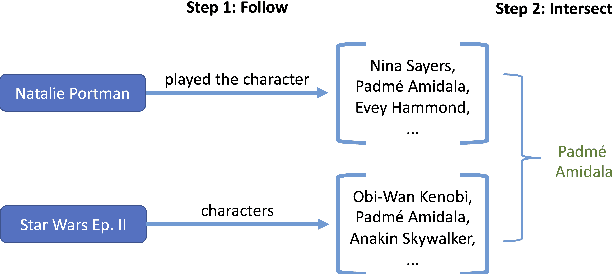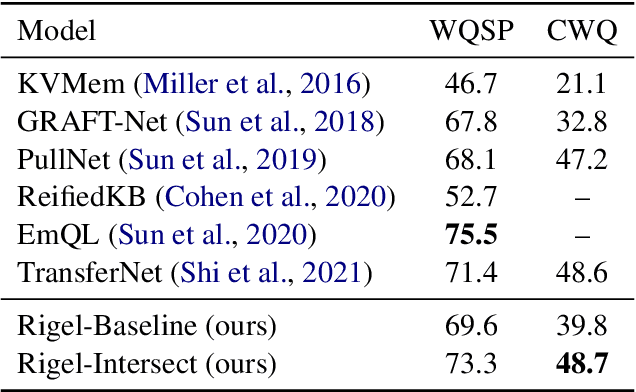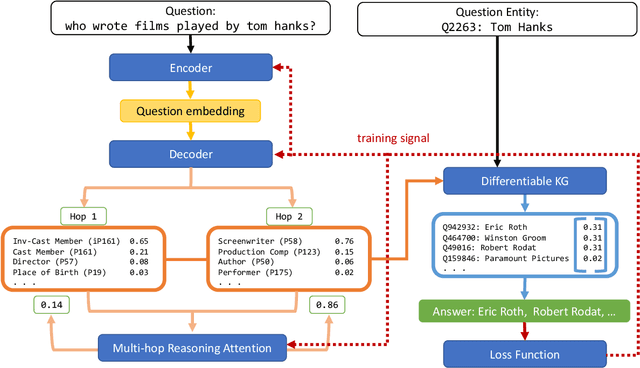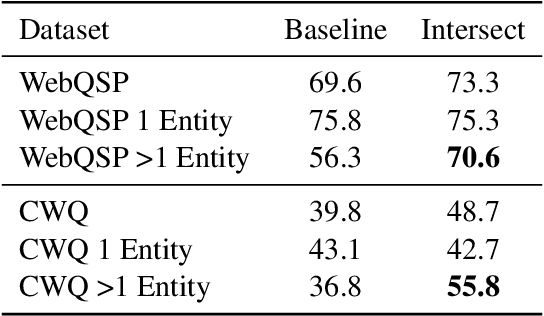Armin Oliya
End-to-End Entity Resolution and Question Answering Using Differentiable Knowledge Graphs
Sep 13, 2021


Abstract:Recently, end-to-end (E2E) trained models for question answering over knowledge graphs (KGQA) have delivered promising results using only a weakly supervised dataset. However, these models are trained and evaluated in a setting where hand-annotated question entities are supplied to the model, leaving the important and non-trivial task of entity resolution (ER) outside the scope of E2E learning. In this work, we extend the boundaries of E2E learning for KGQA to include the training of an ER component. Our model only needs the question text and the answer entities to train, and delivers a stand-alone QA model that does not require an additional ER component to be supplied during runtime. Our approach is fully differentiable, thanks to its reliance on a recent method for building differentiable KGs (Cohen et al., 2020). We evaluate our E2E trained model on two public datasets and show that it comes close to baseline models that use hand-annotated entities.
Expanding End-to-End Question Answering on Differentiable Knowledge Graphs with Intersection
Sep 13, 2021



Abstract:End-to-end question answering using a differentiable knowledge graph is a promising technique that requires only weak supervision, produces interpretable results, and is fully differentiable. Previous implementations of this technique (Cohen et al., 2020) have focused on single-entity questions using a relation following operation. In this paper, we propose a model that explicitly handles multiple-entity questions by implementing a new intersection operation, which identifies the shared elements between two sets of entities. We find that introducing intersection improves performance over a baseline model on two datasets, WebQuestionsSP (69.6% to 73.3% Hits@1) and ComplexWebQuestions (39.8% to 48.7% Hits@1), and in particular, improves performance on questions with multiple entities by over 14% on WebQuestionsSP and by 19% on ComplexWebQuestions.
 Add to Chrome
Add to Chrome Add to Firefox
Add to Firefox Add to Edge
Add to Edge